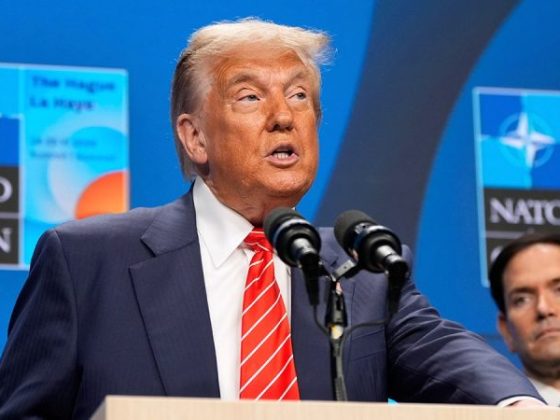Leaders of the North Atlantic Treaty Organization (NATO) have unanimously agreed to significantly increase defense spending to 5% of their Gross Domestic Product (GDP) at the summit in Hague.
This historic move, coming amidst an increasingly belligerent Russia, also saw the alliance’s 32 members renew their ironclad commitment to mutual defense, signaling a united front against evolving global security threats.
The decision represents a major triumph for U.S. President Donald Trump, who has been a vocal critic of European allies for their perceived underspending on security.
The summit itself was largely dominated by efforts to ensure continued U.S. engagement with the transatlantic alliance, a critical concern given growing fears that the U.S. might scale back its military presence in Europe.
Simultaneously, Ukraine’s allies are grappling with the challenge of mounting an effective response to Russia’s ongoing war in the country, now well into its fourth year.
NATO Secretary General Mark Rutte recently suggested that the Kremlin could be in a position to consider an attack on the alliance within five years, underscoring the urgency behind these decisions.
The Hague Summit Declaration issued by the Heads of State and Government participating in the meeting of the North Atlantic Council in The Hague
#NATOsummit
99
Reply
Copy link
Addressing mounting security concerns
The new defense spending target marks a substantial increase from the current goal of 2% of GDP.
This ambitious escalation, detailed in the declaration, is a direct response to “profound security threats and challenges, in particular the long-term threat posed by Russia to Euro-Atlantic security and the persistent threat of terrorism.”
The declaration also reaffirmed NATO’s support for Ukraine, though notably omitted last year’s statement that the country’s future lies within the alliance.
Navigating financial hurdles and implementation
The new target, broken down into 3.5% for core defense spending and an additional 1.5% for related investments like infrastructure and cybersecurity, is the culmination of months of persistent coaxing by Secretary General Rutte.
It is expected to unleash trillions of dollars in defense spending across member states until 2035.
However, the feasibility of achieving this ambitious target remains an open question, particularly as many European countries contend with high levels of public debt.
Some nations, led by Spain, have already raised concerns about the necessity of such extensive spending to meet the new, ambitious lists of weapons and troops required as part of their NATO commitments.
Spain secured the wording change it sought in the statement: On Sunday, the group revised the draft language from “we commit” to “allies commit” to spending 5% on defense.
This adjustment gives Madrid the flexibility to maintain its position of targeting 2.1% of GDP, which it argues is sufficient to meet the alliance’s capability requirements.
To address these concerns, the allies have agreed that “the trajectory and balance of spending” will be subject to a review in 2029.
Additionally, direct contributions towards Ukraine’s defense will now count towards their military spending, providing a degree of flexibility.
During a closed-door session, German Chancellor Friedrich Merz conveyed the allies’ clear message to Russian President Vladimir Putin: “Don’t pick a fight with NATO”, said a Bloomberg report.
The post NATO leaders agrees on increasing defence spending to 5% appeared first on Invezz


